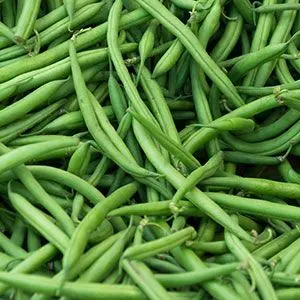Green Beans: This Simple Addition May Boost Your Pet's Digestion and More
Apart from their crunchy goodness, these green veggies can offer your pet a diverse array of nutrients, like polyphenols, fiber and even vitamin C. Discover how you can include them in your pet's meals.

STORY AT-A-GLANCE
- Green beans contain bioactive compounds that may support pet health, such as flavonoids, anthocyanins and polyphenols, as well as assorted vitamins and minerals
- Green beans contain insoluble fiber, which may help bulk up your pet’s stool and promote healthy elimination
- Green beans contain potassium, which may benefit pet health by supporting normal muscle contraction and relaxation, as well as proper nerve function
- Most of the green beans sold today are sprayed with pesticides, so look for organic or spray-free varieties from sustainable sources whenever possible
- If you have a lectin-sensitive pet you can reduce the lectins in green beans by preparing and cooking them properly before serving them
Editor's Note: This article is a reprint. It was originally published January 13, 2023.
Also called string beans or snap beans,1 green beans (Phaseolus vulgaris) are ubiquitous on dinner tables worldwide, and it’s likely you enjoy them from time to time. No matter how they’re prepared, their crunchy goodness will make its way into your stomach. But how about your furry pal waiting beside the table? Can they munch on some green beans as well?
The answer is yes. Green beans can add a diverse array of nutrition to your pet’s meal. Find out what nutrients this veggie can offer, along with the caveats you should know before offering it to your pet.
Green Beans Fun Fact

Enjoyed all over the world, green beans originated from Peru. Other beans came from this country as well, such as kidney, black and navy beans.2
Flavonoids and Polyphenols Are Found in Green Beans
There’s a reason why green beans have long been a staple in diets all over the world. Research has shown they contain several bioactive compounds, such as flavonoids, particularly anthocyanins, as well as polyphenols, which all have high antioxidant capacity. Research suggests green beans may help lower the risk of diseases, such as diabetes and obesity, in humans.3
In the case of animals, these bioactive compounds contribute similarly to good health. For example, a study published in Molecules noted that plant flavonoids exhibited canine anticancer activity within an in vitro environment.4 Intake of flavonoids has also been linked to better spatial memory, according to a mice study published in 2009.5
In the case of polyphenols, a study published in BMC Veterinary Research noted that this class of bioactive plant compounds may help manage inflammation.6 Another study published similar findings highlighting polyphenols’ anti-inflammatory effects.7 To go a little more in depth, here are some of the most abundant polyphenols found in green beans:8
- Catechin
- Epicatechin
- Epigallocatechin gallate (EGCG)
- Epicatechin gallate (ECG)
These polyphenols come with their own health benefits. For example, EGCG was found to help inhibit the growth of canine oral bacteria. ECG has antibacterial benefits as well, but on a lower scale compared to EGCG.9
Green Beans Provide Insoluble Fiber and Other Nutrients
When you feed your pet a nutritionally balanced, species-appropriate diet (with low-glycemic, high-fiber vegetables), their stools should ideally be small and firm. If this isn’t the case, and your pet suffers from occasional bouts of constipation, green beans may help. They contain insoluble fiber, which may help bulk up your pet’s stool and promote healthy elimination.10 Add a teaspoon of this veggie, pureed, for every 10 pounds of body weight, given once or twice a day.
Green beans are also a good source of vitamin C,11 providing 0.76 milligrams per 1 tablespoon serving.12 While mammals like dogs synthesize their own vitamin C in their liver,13 getting supplemental amounts from their diet can be ideal for their health, as this vitamin plays a role in supporting immune system function, as well as collagen production. Collagen is important for wound healing and skin health, as well as for decreasing gut permeability and improving the gut microbiome.14
A tablespoon of green beans also contains 13.1 milligrams (mg) of potassium.15 This nutrient may benefit pet health by supporting normal muscle contraction and relaxation, as well as proper nerve function.16 Your pet can get 2.06 micrograms of folate in a tablespoon of green beans, too.17 This vitamin is necessary for DNA synthesis, repair and methylation.18
Did You Know?

Green beans are a major industry around the world. The global green bean market was worth an estimated $31.1 billion in 2019.19
Sustainability of Growing Green Beans
According to a report by The Conversation, green beans are considered an “eco-friendly option for feeding — and saving — the world,” because the water footprint for growing pulse crops (which include green beans) is only 34% of pork’s and 16% of beef’s. In terms of carbon footprint, pulse crops are “48 times lower than the equivalent weight of British beef cattle.”20
However, due to the popularity of green beans in the U.S., this vegetable has fallen victim to commercial agricultural practices that may be detrimental to your and your pet’s health. According to the Environmental Working Group, green beans rank 12th in their Shopper’s Guide to Pesticides in Produce, which means that the commercially grown green beans you purchase at the grocery are likely to contain pesticides.21
So if you’re purchasing green beans, try to buy organic or spray-free varieties from sustainable sources. There may be times when organic green beans are unavailable to you. If this is the case, conventionally grown green beans may be used. Just remember to wash them thoroughly before feeding them to your family, including your pet.
Top Producers of Green Beans

China is the world’s top producer of green beans (21 million tons), which roughly equates to 75% of the world’s total production. Indonesia comes in at second place with 946,000 tons, and the U.S. in third place with 813,000 tons.22

How to Offer Green Beans to Your Pets
Like many plants and vegetables, green beans contain naturally occurring antinutrients, including lectins. These are sticky proteins that may contribute to gastrointestinal problems, such as leaky gut syndrome, when consumed in large quantities. A study published in the journal Applied Microbiology and Technology showed that green beans may contain anywhere between 4.8 mg to 1.1 grams of lectin per 100-gram (3.5 ounce) serving. This means they can be low to exceptionally high in lectins, depending on the variety.23,24
If you have a lectin-sensitive pet you can reduce the lectins in green beans by preparing and cooking them properly before serving them:
Procedure:
- Soak the beans in water for at least 12 hours before cooking, changing the water frequently.
- Discard the soaking water and rinse the beans.
- Cook for at least 15 minutes, ideally steamed.
When you’re preparing green beans for your own meals, don’t throw away their tops and bottoms. You can chop them up into tiny, bite-sized morsels and add them to your pet’s food bowl, as a food topper or an ingredient in their nutritionally balanced homemade meal. They also make for great training treats or stuffing for enrichment toys.
When you’re giving green beans as a treat to your pet, keep the total serving of all healthy “extras” like this to less than 10% of their daily caloric intake. Again, if you’re using green beans to add dietary fiber to your pet’s diet, remember that they should only get a teaspoon for every 10 pounds of body weight, once or twice a day.
Sources and References
- 1 The Spruce Eats, August 15, 2019
- 2 Wisconsin Department of Public Instruction, Green Bean
- 3 Chil. j. Agric. Res. Vol. 78 No. 2 Chillán, June 2018, Abstract
- 4 Molecules. 2013 Dec 12;18(12):15448–15463, Abstract
- 5 Genes & Nutrition Volume 4, Pages 251–270 (2009), Abstract
- 6 BMC Veterinary Research Volume 16, Article number: 234 (2020), Discussion
- 7 Antioxidants (Basel). 2020 Aug 9;9(8):725, Concluding Remarks
- 8 Comprehensive Reviews in Food Science and Food Safety Vol.17, 2018, Polyphenols in Common Beans
- 9 J Vet Med Sci. 2016 May 28;78(9):1439–1445, Abstract
- 10 Mayo Clinic, November 4, 2022
- 11 American Heart Association, November 22, 2022
- 12,14,15,17 USDA, Beans, snap, green, raw
- 13 Can J Vet Res. 2006 Oct;70(4):305–307
- 16 VCA Animal Hospitals, Hypokalemia (Low Potassium Levels in Dogs)
- 18 EFSA Journal 2012;10(5):2674, Abstract
- 19,22 Global Trade Mag, October 12, 2020
- 20 The Conversation, August 17, 2016
- 21 EWG, 2024 Shopper’s Guide to Pesticides in Produce
- 23 Appl Microbiol Biotechnol. 2010 Oct 3;89(1):45–55
- 24 Phytomedicine. 2010 May;17(6):457-62











